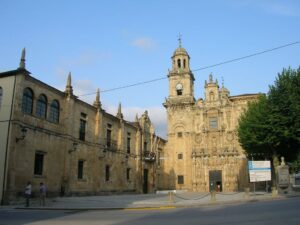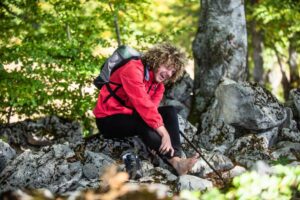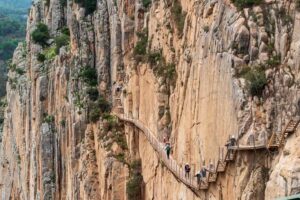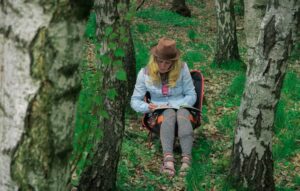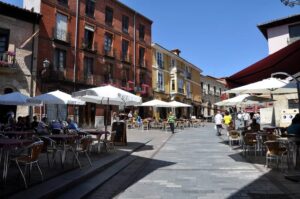
Over the years, the Organised Camino de Santiago has become a reality. Today, among other things, it allows for much greater accessibility for all types of pilgrims, especially those with disabilities or mobility issues.
It is not an entirely simple task, as beyond physical preparation, it also largely depends on the terrain conditions. Depending on the chosen route, for instance, the Portuguese route of the Camino de Santiago, it can become completely inaccessible or, on the contrary, adaptable.
For these specific situations, some alternative routes have been established. This way, pilgrims with mobility issues, such as those in wheelchairs, can be accommodated.
Índice de contenidos
The Camino de Santiago and Pilgrims with Disabilities

The Organised Camino from Sarria to Santiago de Compostela has a long history spanning hundreds of years. In fact, even in the Middle Ages, many people with mobility problems or disabilities undertook this journey in search of a miracle or cure upon reaching the tomb of the Apostle.
Despite the efforts, there is still much to be done, as the challenges for those with reduced mobility are numerous. Therefore, adequate physical preparation before starting the French Route of the Camino de Santiago is always the best recommendation.
Pre-training
Regardless of the chosen Jacobean route, for example, the Portuguese Camino from Tui, prior training is essential for any pilgrim, especially those with disabilities.
Apart from strengthening them, it will also allow them to determine the number of stages of the Northern Camino they can complete and the kilometres to cover.
Building physical endurance is crucial for any pilgrim, enabling them to establish the number of segments into which each stage can be divided.
Adapted Wheelchairs
Here, we could say there are two main options: adapting the everyday wheelchair or, alternatively, acquiring a hand-bike. This is a type of wheelchair used for cycling and has only three wheels.
This latter option is perfect, especially for those in good physical shape. Among other things, it will allow you to access more rugged areas while maintaining stability.
The Recommended Route
There are multiple options to reach Santiago de Compostela, but without a doubt, the French Way is the most recommended. It is the most adapted for people with disabilities for a simple reason: it is the most travelled route.
As with any journey, it is best to plan everything in advance: from the number of stages you will undertake, the stops, and especially the accommodations. Keep in mind that although most are adapted, it is best to avoid unpleasant surprises.
The Climate Factor
Another recommendation to consider is the time of year, as weather conditions can directly affect the progress of the journey. Remember that during the rainy months, most paths will become inaccessible, as they will be almost flooded.
Summer tends to be the season when the number of pilgrims increases as it coincides with the vacation period for most people. However, for those with mobility issues, we recommend less crowded seasons, such as spring.
Always keep in mind that the Camino de Santiago is not particularly a competition. If you do not feel able to complete the journey in one go, you can always undertake different stages at various times of the year.
Final Recommendations

Although the limitations vary drastically depending on the type of disability the pilgrim has, there are some general recommendations that can apply to all cases:
- Try to travel always accompanied or in groups, as it will be much easier to face any kind of difficulty. In case you need help, it will be easier to find a kind soul.
- Ensure to carry light luggage, as a heavy backpack could become a problem during long journeys.
- Hydration must always be a constant, especially if you decide to make the journey during the hot season. You can carry a canteen and refill it along the way.
- Clothing is crucial, as in any other trip. The fresher the fabrics, the better for your comfort. Additionally, always remember to include a cap or hat.
- Last but not least, make sure sunscreen is always your best companion.

